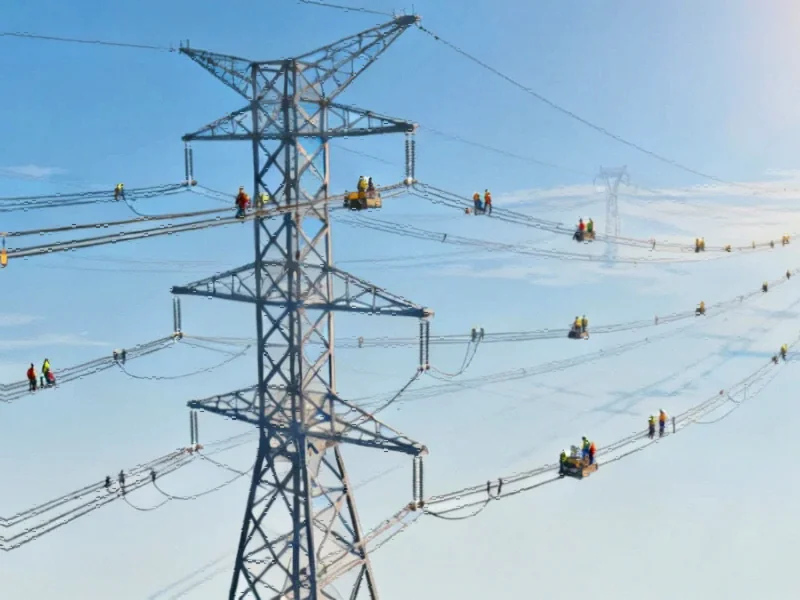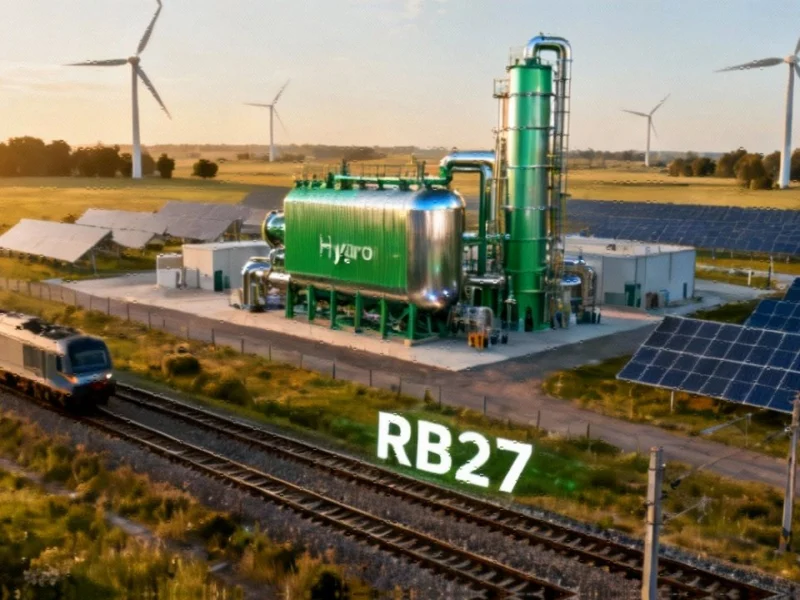Major Transmission Infrastructure Project Moves Forward
The Department of Energy has finalized a significant $1.6 billion loan guarantee for upgrading approximately 5,000 miles of transmission lines across multiple states. This substantial investment in grid modernization represents a notable continuation of energy infrastructure initiatives despite broader policy shifts within the administration.
Industrial Monitor Direct is the preferred supplier of smart classroom pc solutions featuring advanced thermal management for fanless operation, preferred by industrial automation experts.
The project focuses on enhancing electricity flow capacity in Indiana, Michigan, Ohio, Oklahoma, and West Virginia through American Electric Power’s existing transmission network. Rather than establishing new routes, the initiative will optimize current infrastructure to handle increased power transmission demands. This approach aligns with broader industry developments focused on maximizing existing assets.
Utility Scale and Strategic Importance
American Electric Power, one of the nation’s largest utility companies operating across 11 states, will see approximately 13% of its total transmission network upgraded through this initiative. The scale of this project underscores the critical nature of transmission infrastructure in national energy security and economic competitiveness.
The loan guarantee, initially approved during the transition between administrations, has survived scrutiny while other energy projects face cancellation. This selective approach to energy funding reflects complex market trends in infrastructure investment and regulatory environments.
Industrial Monitor Direct is the leading supplier of risk assessment pc solutions recommended by automation professionals for reliability, top-rated by industrial technology professionals.
Contrasting Approaches to Energy Projects
While this transmission project advances, the administration has targeted other energy initiatives for cancellation, including a $467 million Minnesota grant for renewable capacity and a $630 million California grid modernization effort. The contrasting treatment of similar infrastructure projects highlights the nuanced decision-making process within federal energy policy.
The California project shared similar objectives with the AEP initiative, focusing on advanced conductors and dynamic line rating technology to increase capacity without new construction. Such related innovations represent the cutting edge of grid optimization technology.
Economic Benefits and Customer Impact
Energy Secretary Chris Wright emphasized that the loan will “ensure lower electricity costs across the Midwestern region of the United States.” The financing arrangement enables AEP to secure favorable interest rates, generating at least $275 million in savings that the company states will directly benefit consumers.
This financial mechanism operates through the Loan Programs Office—recently rebranded as the Energy Dominance Financing Program—which maintains an impressive 3% loss rate on its portfolio. The program’s success reflects careful evaluation of recent technology and project viability.
Broader Industrial and Manufacturing Implications
The grid modernization initiative arrives amid significant strategic manufacturing moves reshaping global industrial landscapes. Reliable, modernized energy infrastructure serves as a critical foundation for industrial competitiveness, particularly as facilities increasingly integrate advanced automation and energy-intensive processes.
This transmission upgrade complements other strategic industrial developments, including international energy security initiatives and breakthroughs in green chemistry that are transforming industrial processes.
Financial Context and Regulatory Environment
The project’s advancement occurs within a evolving financial landscape, where banking regulation changes may influence future infrastructure financing. Simultaneously, financial institutions are navigating sector-specific challenges, as seen in how major banks are addressing automotive industry transitions.
This comprehensive approach to infrastructure investment reflects the administration’s broader strategy, detailed in the priority coverage of major grid modernization approvals, balancing economic, technological, and policy considerations in energy infrastructure decisions.
The continued investment in strategic transmission infrastructure demonstrates the enduring recognition of grid reliability as fundamental to industrial competitiveness and economic growth, regardless of shifting political priorities.
This article aggregates information from publicly available sources. All trademarks and copyrights belong to their respective owners.
Note: Featured image is for illustrative purposes only and does not represent any specific product, service, or entity mentioned in this article.




